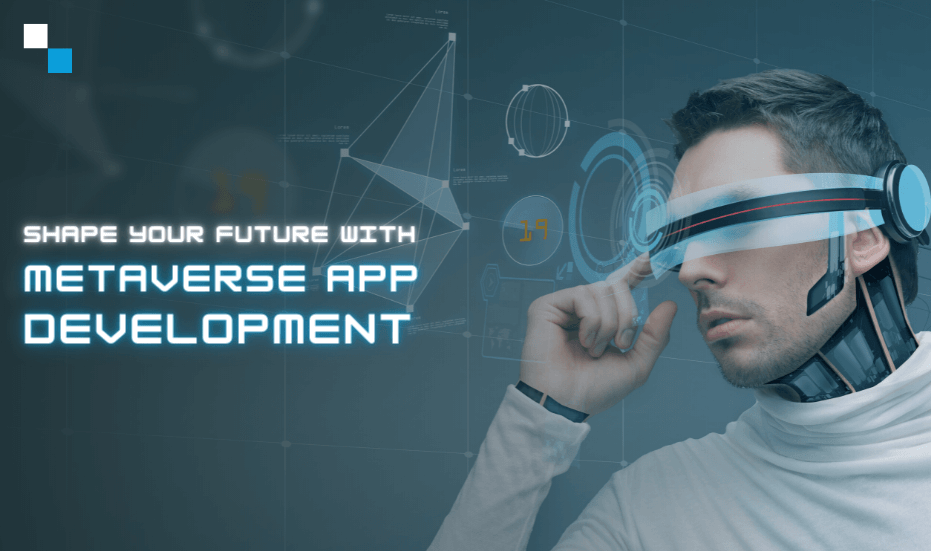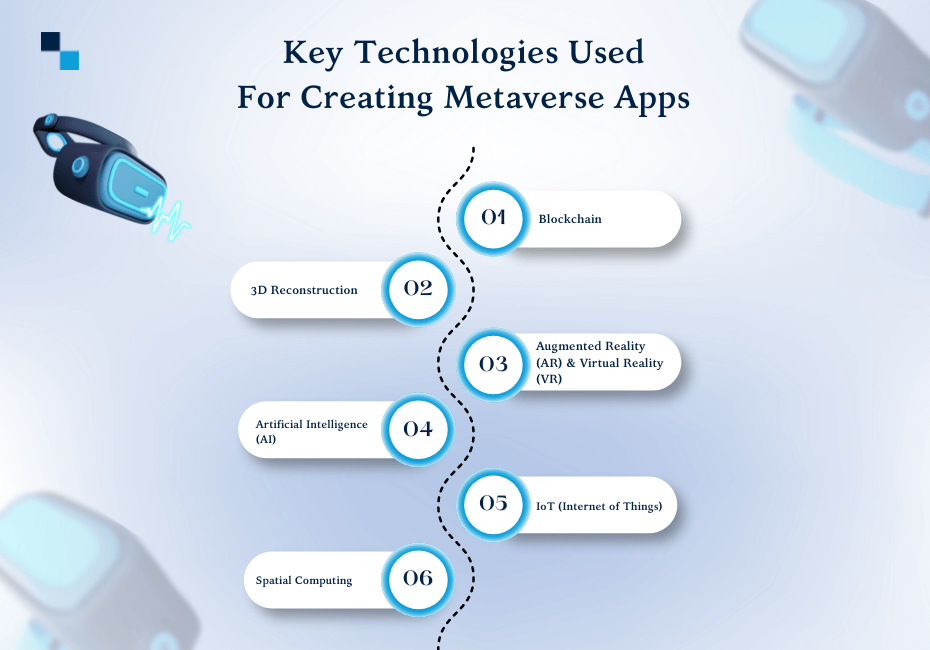
If you are pondering what will be the future of the digiverse, the answer may be Metaverse. Have you ever played a game with your digital avatar? If yes, then you can easily understand what the metaverse actually is.
To be very precise, Metaverse is a unique world that takes you beyond the real universe. It’s made possible using AR, VR, and XR technologies.
Metaverse is a massively trending topic in today’s technology landscape and so is the demand for Metaverse app development. It’s penetrating different digital realms like online gaming, social media, cryptocurrency, virtual reality, and augmented reality. Despite the growing popularity of the Metaverse, the concept is still unclear to many.
So why delay? Let’s delve into it!
What is a Metaverse App?
The term ‘metaverse app’ is often used interchangeably with ‘metaverse platform’ as both refer to the same thing. Metaverse apps and metaverse platform is an application that offers a way for virtual interaction to users with a rich network of 3D worlds, many of which are constructed on the blockchain.
Most of the projects now offer NFT integration that allows the users to truly ‘own’ their in-game items. For example, many projects provide plots of virtual land that users can purchase – the buyer ‘owns’ that land and can sell it for profit.
Therefore, almost every industry- whether business, education, or gaming- can employ Metaverse Development Company to create a metaverse ecosystem in some way, owing to the popularity of the term Metaverse and its apps.
As of February 2022, 107 mobile apps that searched for the keyword “metaverse” in were actually mobile gaming apps. Finance apps came in second, with 101 apps in this category using the keyword in their name or description.

Technology Stack That Powers Metaverse Apps

Blockchain
Blockchain is quite essential for working, evolvement, and even metaverse app development as this means the apps are naturally decentralized and allow users to maintain a high degree of anonymity. Also, businesses can construct decentralized and transparent solutions to render services like digital proof of ownership, digital collectability, value transfer, and interoperability with the use of blockchain.
Moreover, when it comes to transactions for the exchange of value and rewards which require some digital currency then cryptocurrency plays its own significance here.
For example, on the Binance Smart Chain, there is a game Battle Infinity that offers an immersive 3D world where users can explore and earn rewards while experiencing true ownership of their in-game entities in the form of NFTs.
3D Reconstruction
There is a need for a specific technology, i.e, 3D reconstruction that can create thrilling immersive experience. Thanks to this innovation, that can made it possible to create a replica of real objects in the virtual world. It is an advanced technology that assists in creating a realistic yet virtual environment where the users can navigate as avatars to check out the imitation of real-world objects.
Augmented Reality (AR) and Virtual Reality (VR)
Augmented reality is a technology that allows combining the real world with virtual reality and allows the creation of various 3D environments that can be experienced by anyone through specialized VR devices. AR & VR are the two technologies that enables entry to a virtual world, or the Metaverse. AR and VR are in such a hype that is arousing the urge of tech giants to invest in futuristic metaverse app development or projects.
Artificial Intelligence (AI)
Enhancing the link between the physical and digital world needs some computing sophistication. Therefore, AI plays a vital role in language processing and ensuring that our machines can understand us even in Metaverse.
Artificial intelligence (AI) is nowadays quite common and apparently applicable in our day-to-day lives such as in facial recognition, faster computing, business automation, and much more. Likewise, it has facilitated the composition of immersive virtual spaces. Even it analyzes via 3-D scans and images to generate realistic avatars that almost align with the actual participant.
Internet of Things (IoT)
The Internet of Things (IoT) basically acts as a bridge between the physical world and the internet world as it connects both these further permitting the exchange of data via sensors. In the case of Metaverse, IoT collects details from the physical world and renders items into virtual space this improves the accuracy level of digital illustrations by creating precise digital twins, i.e., the virtual copies of real things.
Spatial Computing
Spatial computing is already making our living more comfortable with virtual assistants in multiple verticals whether it’s riding apps or shopping trials in virtual try rooms and many more. This technology makes the idea of Metaverse accessible by integrating AR, VR, and MR. The vision of metaverse app development with a parallel, three-dimensional, virtual universe that interacts with the real world is somehow relying on spatial computing as it helps the user in co-relating the real-world items with those in the metaverse.
Inference
It’s undeniable to say that metaverse is all set to prove its true potential in each and every industry in the coming future because every entrepreneur has either begun or is planning to begin to own their virtual world through the metaverse app development, therefore, they are actively looking for a promising metaverse development company to launch their own metaverse platforms.
If you are one of them, then Antier can assist you the best in your business ideas becoming true with robust services. Book a free consultation today!

